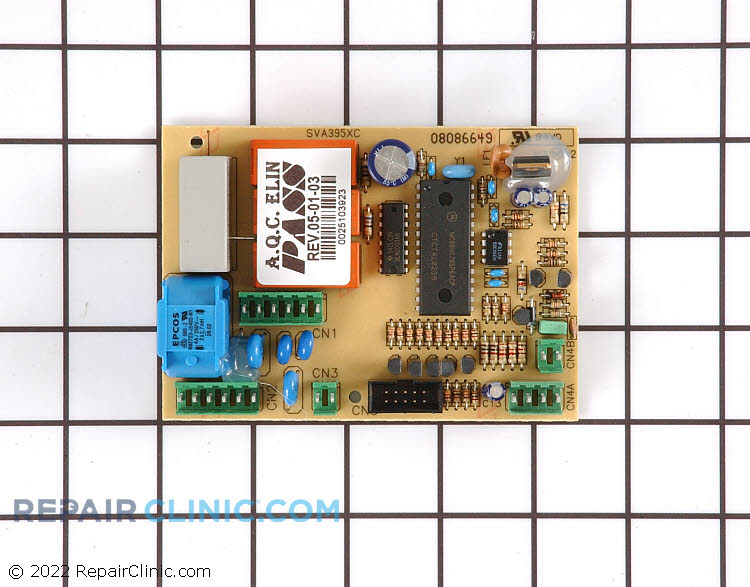Appliantology Newsletter, Winter 2011
0. Introduction
1. It’s the exciting dishwasher issue!
2. Uncommonly delicious parts return policy
3. New merit apprenticeship program
4. Samurai News®
5. Mrs. Samurai’s dojo
6. Story time
7. Hillstomping update
8. Domo!
### ### ### ###
0. Introduction
From deep within the bowels of frozen Yankeeland, in the foothills of the White Mountains and finally dug out from under 13 feet of fresh, pristine global warming, it’s another steamy issue of Appliantology. Movin’ on…
### ### ### ###
1. It’s the exciting dishwasher issue!
This is the issue you’ve all been laying awake at night for, checking the inbox on your iPhone every hour, suffering irritability with your spouse and fatigue at work. Now, the wait is over. Yes, my brothers and sisters, just in time for that visit from your mother-in-law, I bring you _Appliantology: The Dishwasher Issue_.
Here are some recent pearls of dishwasher wisdom I’ve cast since the last issue of Appliantology:
Cheat sheet for whupping up on the “Clean light blinking 7 times” problem in Whirlpool and Kitchenaid dishwashers – http://fixitnow.com/?p=5842
Putting a GE Monogram dishwasher with membrane control pad into Test Mode – http://fixitnow.com/?p=5834
GE Profile dishwasher making a high-pitched squealing noise from control board – http://fixitnow.com/?p=5826
Special repair trick for LG dishwashers with slow or no drain problem – http://fixitnow.com/?p=5654
Maytag dishwasher MDBH955AWB: He’s dead, Jim – http://fixitnow.com/?p=5579
KitchenAid Dishwasher KUDI24SE — No power – http://fixitnow.com/?p=5568
Dishwashers and hard water: getting the best possible results – http://fixitnow.com/?p=5536
A fantastic photo essay detailing the disassembly of the motor-pump on the new Bosch Ascenta dishwashers, an Internet premiere exclusive! – http://fixitnow.com/?p=5403
All dishwasher repair posts – http://fixitnow.com/category/appliance-repair-posts/dishwasher-repair/
### ### ### ###
2. Uncommonly delicious parts return policy
OMG, so you know my crazy parts partner has finally gone off the deep end. Yeah, they’re like teutally giving a 365-day, no-hassle return policy on ALL appliance parts, even electronic parts that have already been installed! Is that nuts? Ya sure, ya betcha! So they’re like teutally taking the risk out of DIY appliance repair.
Look, I can help you troubleshoot your appliance and I can usually get you right to the problem. But the fact is that you’re out there somewhere and and I’m up here in Yankeeland; it just ain’t the same thing as being right there at the appliance, listening to it, smelling it, feeling it, tasting it… yes, appliance repair is a full contact sport!
Well, to level the playing field, my crazy parts partner is offering an unheard of return policy: return parts for a full year with no hassle. Just use the parts search box in the sidebar at Fixitnow.com ( http://fixitnow.com ) or the parts search box at the top of Appliantology.org ( http://appliantology.org ) or any of the appliance parts banners or links on those sites to buy parts.
Read more about this insane return policy here: http://fixitnow.com/?p=5777
### ### ### ###
3. New merit apprenticeship program
Here at Samurai International Headquarters, we are impassioned supporters of meritocracy. Any meritocracy. As far as we’re concerned, the more the meritier… or something like that. As someone who speaks 17 self-invented languages fluently, it is difficult gearing down to this guttural gum-smacking that you Ameedeekans call “Engrish.”
So, anyone who contributes good repair content can earn an upgrade from Grasshopper to Merit Apprentice in the repair forums.
Apprentices at the Samurai School of Appliantology ( www.appliantology.org ) enjoy many perks over Grasshoppers:
– request service manuals in the Appliance Service Manual Request forum;
– access the other forums besides just the Kitchen and Laundry forums;
– edit your own posts;
– send and receive private messages (PMs) which can include links to service manuals;
– download/upload/view the thousands of illustrative and illuminating attachments;
– post replies to other topics that you didn’t start.
To be an Apprentice, you can either subscribe to one of the Apprenticeship programs (Basic, Annual, or Permapprenticehip) or you can earn it. Yep, all of us here at Samurai International Headquarters are tickled to the point of incontinence to announce our new Merit Apprenticeship program where you can earn your apprenticeship through a quid pro quo kind of a deal. It made a big splash. (Sorry, I couldn’t help myself.)
Here’s the deal: if you contribute original repair material suitable enough to be featured on Fixitnow.com you will be awarded a Merit Apprenticeship. An example of this would be a series of photos of an appliance repair you did with captions that explain what’s going on. The common way a Grasshopper will earn his (or her) Merit Apprenticeship is by posting photos of his craftsmanship in the Samurai School ( www.appliantology.org ) as the culmination of their forum topic, kind of like a Master’s thesis. The criteria is this: could another Grasshopper come along later and gain crucial insight into doing the repair from your original photos and commentary? If yes, then *ding-ding-ding!* you win the Golden Calf. But since a grumpy old dude with a shiny face melted down our last golden calf, you’ll have to settle for a Merit Apprenticeship.
### ### ### ###
4. Samurai News®
>> I’ve been experimenting with offering help via texting. It’s been great for answering quickie questions, helping folks find information at my site, and resolving site log-in problems. Because of the limiting and kludgy nature of texting, if someone needs more detailed troubleshooting and repair help, I’ll refer them to the Samurai School. But texting can be a good way to get started. Or maybe you just wanna reach out and say, “Konnichiwa, Samurai-san! Anata wa buto des, na?” Bring it: 603-505-8460.
>> The new home of the Samurai appliance repair forums, a.k.a., the Samurai School of Appliantology ( www.appliantology.org ), is rockin’ along. Stop by and say hey. If you’re a professional appliance repair tech, email me and let me know, tell me a little about your background, and you’ll get upgraded to Master Appliantologist at the forums.
>> Well, after being on Flickr for over five years, I’m being evicted. Seems that someone complained to Flickr about some of my appliance repair photos having the text, “Buy appliance parts at parts.fixitnow.com” imprinted on them. They thought it was too commercial on how-to appliance repair photos and diagrams that I was giving away for FREE. Yep, some people will even complain about something when it’s free. And Flickr agreed with them.
So I’ve moved all my photos to Smugmug.com ( http://appliantology.smugmug.com/ ) which, as it turns out, is a superior image hosting service anyway and they don’t have a neo-marxist hangup about someone promoting their website or bidness through their photos. But it also means I need to change the photo links embedded in over 400 posts at my blog, Fixitnow.com, from Flickr to Smugmug. Oy!
BTW, if you want to try out Smugmug, here’s my referral link to signup for a free trial: https://secure.smugmug.com/signup.mg?Coupon=wA98wSm1iMAKM . If you do decide you like ’em and sign up for a permanent account, I’ll earn a $10 referral credit to use toward my account renewal. Domo!
### ### ### ###
5. Mrs. Samurai’s dojo
Take a little respite from your appliance repair concerns in Mrs. Samurai’s dojo. Come on in and make yourself at home, and I’ll serve up some tasty tidbits on other aspects of home living, such as some of the Samurai’s favorite recipes.
Everybody from Popeye to your mama has been telling you to eat more greens because they’re so good for you. But the leafy greens aren’t always popular with folks, especially kids, because they think they are gross in some way. Here is an awesome recipe either for the greens nay-sayers, or those who just want a different way to cook ‘em than what they’ve been doing. My kids fight over these.
Krispy Kale
What you’ll need:
Kale – either one really big bunch or two smaller (see note)
Extra-virgin olive oil
sea salt
large bowl
a couple of large baking sheets
2 wire cooling racks that fit on top of the baking sheets (see note)
What to do:
Preheat your oven to 350 deg.
Tear the kale leaves off of their stems. They should be torn roughly the size of tortilla chips. Rinse and dry them as much as possible (a salad spinner works perfectly).
In a large bowl, toss the kale with a pretty good-size drizzle of olive oil and some salt, then spread it evenly on the wire racks placed on top of the baking sheets. Bake for about 15 minutes until nice and crispy. The leaves will darken somewhat. Enjoy right away!
Serves about 4-6 as a side dish.
Note: this recipe only seems to work with kale and its curly leaves. Any of the flat-leaved greens don’t crisp up properly. Also, be sure to use the wire racks – if you put the kale directly on the baking sheets, you would have to turn all the pieces halfway through the cooking to avoid sogginess – tedious!
### ### ### ###
6. Story time
Lance DeMoi and the Blood Wand
A short story by Stephen Brown
[Lance DeMoi, the top agent of the Department of Paranormal Investigation and Research, is sent on a mission in England where a mysterious group of vampires have threatened to use an ancient artifact against the living. Lance must venture through a dark and menacing forest to stop them, where he will meet both new friends and new enemies. If he does not find and destroy the relic in time, then all of the UK could fall under a vampiric shadow. But will Lance be able to defeat the chief vampire before it is too late?]
Lance DeMoi leaned against a bulkhead in the plane; he could feel the vibrations of the engines on his back. DPIR agents milled about the plane, carrying out different tasks. Lance’s handler, Agent Grey, walked over to where he was sitting.
“DeMoi, you know the mission, you know who to kill, and to retrieve the Blood Wand. You’ll be dropped in this forest,” Grey pulled out a map. “Here, a few miles south of London, the vampire colony is nested here, in some ruins of a faerie fort. We need you to execute this quickly DeMoi – we believe they are on some ceremonial schedule – get the Wand before sunrise.”
Lance nodded sleepily; it was 11:30 PM. He had drunk two cups of coffee, but he was still tired.
“Getting fatigued in my old age,” Lance mumbled.
“Oh please,” Grey sighed as he walked away.
The plane reached London, a great sea of lights in the early morning darkness. Lance pulled on his parachute and proceeded to the hatch. Grey ambled over.
“Parachute?” The handler asked.
“Check.”
“Headset?”
“Check.”
“Extra headset?”
(krk)”Check. Over.”(krk).
“Array of stakes?”
Lance slapped his belt, jangling the stakes together.
“Revolver with silver bullets?”
“Shiny.” Lance pulled out his revolver and cocked it.
“All right, Jason open the hatch,” said Grey. The agent by the door opened it; a blast of cold, morning air smacked Lance in the face, and his ears were filled with the roaring of the engine and the wind. He braced himself against the doorway, his face turning slightly green; heights had always bothered him.
“Afraid of heights? Even after all these years?” Grey smirked as he started to walk away.
“Aren’t you going to wish me luck?”
Grey grunted.
“I’m so lucky to have you as my handler.” And with that, he jumped from the plane, into the night and the forest below.
Read the rest of Part 1 of this story here:
http://dpirfiles.blogspot.com/2011/02/lance-demoi-and-blood-wand-part-1.html
### ### ### ###
7. Hillstomping update
An Appliantology newsletter just wouldn’t be complete without a hillstomping update. Thankfully, all this global warming has brought tremendous amounts of snowfall and record cold temps, so the winter hiking in the White Mountains has been outstanding this year. The best one so far, though, was the recent hike the Oz Man (my semper fi canine hiking partner) and I did up Mts. Methodius and Elijah in the Northern Saints range (some people still call these by their old political names of Mts. Madison and Adams in the northern presidential range).
Turn your speakers up and click full screen mode to get the full effect of the slideshow. Kick back and enjoy!
http://albums.phanfare.com/slideshow.aspx?i=1&db=1&pw=obuTyVFB&a_id=5027731
### ### ### ###
8. Domo!
Finally, I want to shout out a big fat “DOMO!” to all the fine Master Appliantologists who help answer questions in the repair forums. We learn from each other and we freely share our knowledge with all seekers as a totally free-will, voluntary love-offering to you. If one of these fine Masters helped you with your repair and saved you some coin, let ’em know!
ACtechGUY
appl.tech.29501
BrntToast
Budget Appliance Repair
certified tech group 51
denrayr
DIAMOND GAZZA
dkpd1581
DurhamAppliance
john63
kdog
KurtiusInterupptus
LLAMBERT
Moostafa
nickfixit
RegUS_PatOff
ROBBYRIG
SANTA
Southern Appliance
Strathy
Toranaga
Tronicsmasta
Trying to help
~~~fini~~~
Samurai Appliance Repair Man
The Samurai Family of Appliance Repair Websites
Parts==> http://parts.fixitnow.com
Forums==> http://appliantology.org
Facebook==> http://facebook.com/fixitnowsamurai
Twitter==> http://twitter.com/fixitnowsamurai
Newsletter==> http://newsletter.fixitnow.com
SMS==> 603-505-8460















